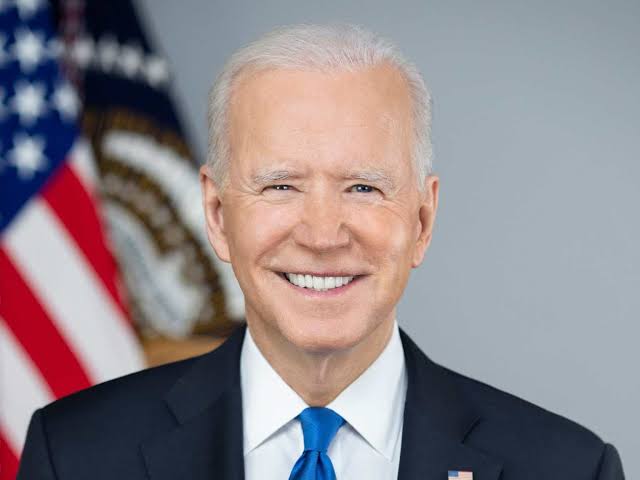Joe Biden’s current approval ratings have sparked discussions about the challenges he may face in the 2024 presidential race, particularly if he competes against former President Donald Trump. Interestingly, the situation bears resemblance to the experiences of his two immediate predecessors, who also grappled with varying levels of popularity during the early phases of their presidencies. Observers often ponder about Biden’s prospects for re-election in light of these trends.
In the case of both Donald Trump and Barack Obama, observers have noted relatively straightforward explanations for their popularity fluctuations. During Obama’s tenure, the unemployment rate stood at a daunting 9.1 percent on September 9, 2011, and the debate over the Affordable Care Act, known as Obamacare, was a significant point of contention. Trump, known for his polarizing leadership style, consistently faced mixed opinions, with periods of unpopularity during his presidency. For Biden, the initial period following his inauguration saw a warm reception, but his abrupt decision to withdraw troops from Afghanistan led to a noticeable dip in approval. Since then, analysts have grappled with pinpointing a single, definitive reason for his shifting favorability.
Comparatively, analysts have observed that Biden’s economic policies have seemingly outperformed those of Obama’s first term. The threat of an economic recession has diminished, and internal Democratic conflicts with the left-wing faction and challenges posed by the COVID-19 pandemic have somewhat subsided. Biden’s foreign policy team has adeptly navigated challenges to maintain relative stability in relations with Russia. In addition, pockets of bipartisan cooperation have emerged on select issues. Nonetheless, political analysts continue to scrutinize why Biden struggles to gain sustained electoral traction.
In theory, analysts suggest that inflation is a leading contributor to Biden’s declining popularity. The rising cost of essential goods and services has strained household finances, offsetting some of the economic progress achieved during his presidency. Observers note that the White House currently lacks a comprehensive strategy to address this issue, aside from hopeful anticipation that gas prices may ease should the Ukraine conflict deescalate.
Joe Biden’s current unpopularity is a subject of significant debate among political observers. While parallels can be drawn to the challenges faced by his predecessors, such as Barack Obama and Donald Trump, pinpointing the precise reasons for his declining favorability proves elusive. Factors like inflation, shifts in minority support, and concerns over Biden’s age contribute to this multifaceted issue, and observers continue to analyze the evolving political landscape for clues to his future prospects.
However, the economic aspect represents only one facet of Biden’s popularity challenges. Multiple polls and surveys indicate that he is gradually losing support among minority groups, mirroring trends observed during Trump’s time in office. Furthermore, concerns surrounding specific social issues have taken root within the Democratic party, with segments of African Americans and Hispanics showing a growing affinity for the Republican party.
Another noteworthy factor under scrutiny is Biden’s age, which some observers speculate may influence certain voters. His relatively limited public appearances during his presidency may have contributed to a temporary spike in popularity, particularly during the height of the Afghanistan crisis. There is an ongoing perception among segments of the electorate that a vote for Biden essentially translates to a vote for Vice President Kamala Harris. Trump’s effective utilization of this perception may be contributing to his political advantage. To potentially regain popularity, observers suggest that Biden could adopt a more assertive and visible role, despite the inherent risks involved.
Adding complexity to this equation is the evolving landscape of American politics. In recent years, observers note a shift in voter priorities and concerns. Issues such as climate change, healthcare, and social justice have gained prominence, and Biden’s ability to address these issues effectively may significantly impact his standing with the electorate.
In essence, this situation presents a complex challenge for the Biden administration. Beyond the economic factor, observers acknowledge that a prevailing sense of frustration and despair exists among American citizens, particularly among the younger generation. The prolonged effects of the COVID-19 pandemic and deeply rooted societal issues have amplified this frustration.
Addressing this multifaceted problem requires a nuanced approach that extends beyond the customary duties of a sitting president. It may not necessarily hinge on Biden embodying the charismatic leadership of a Jimmy Carter or becoming a visionary figure equipped to navigate the ever-changing seas of technology and societal dynamics. Instead, observers speculate that Biden’s path to rekindling hope could lie in embracing a brighter vision of the future and pursuing re-election with unwavering determination.
However, it’s clear to observers that the American electorate no longer solely relies on an aging president to be the sole source of hope. The solution may involve adopting a multifaceted strategy that recognizes the shifting dynamics of leadership in an ever-evolving world.



 For all latest articles, follow on Google News
For all latest articles, follow on Google News